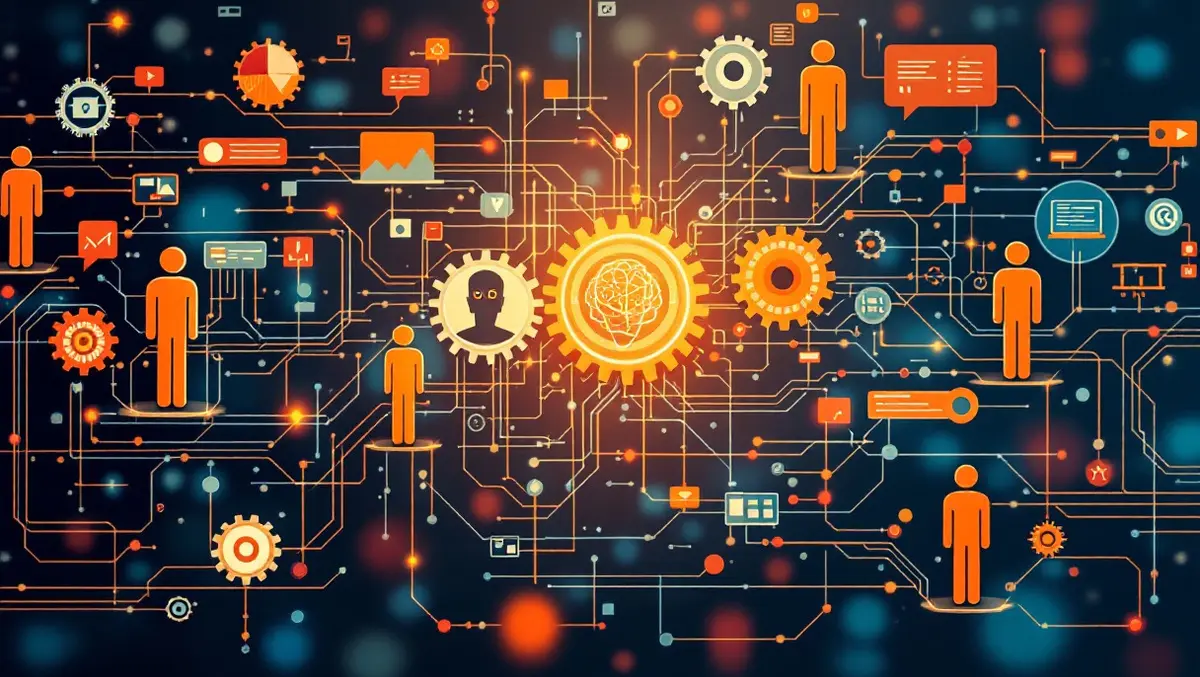
UiPath unveils agentic automation for unified AI & workflow
UiPath has announced the launch of its latest UiPath Platform for agentic automation, a system that integrates AI agents, robots, and people under a unified and orchestrated approach designed to improve workflow management for businesses.
The platform is accessible as a free trial and will see select features move from preview to general availability in the coming weeks.
UiPath states that enterprises have faced challenges in moving AI from isolated use cases to large-scale deployment, citing concerns around security, compliance, reliability, slow pilot adoption, and potential vendor lock-in.
The company's new release seeks to address these issues by uniting its automation experience with an agentic architecture built for managing critical business functions.
Daniel Dines, Founder and Chief Executive Officer at UiPath, said: "With this launch, we fully enter our second act. We've built a platform that unifies AI, RPA, and human decision making so companies can deliver smarter, more resilient workflows without added complexity. As models and chips commoditise, the value of AI moves up the stack to orchestration and intelligence. That's where UiPath leads. But we also lead in empowering people—to be more creative, more productive—and to reach their full potential. That's where UiPath's mission continues."
Agentic automation, as described by UiPath, combines robotic process automation (RPA), artificial intelligence models, and human expertise to create coordinated workflows in which each element works together to optimise processes and drive efficiencies.
The UiPath Platform's central coordination is provided by UiPath Maestro, a new orchestration layer that automates, models, and oversees business processes end to end. Maestro includes process intelligence and key performance indicator monitoring, supporting continuous optimisation as businesses adjust their workflows and scale up AI agent deployment safely.
The company ensures that AI agents within its new platform operate with defined controls and oversight. Features such as real-time vulnerability assessments and robust data controls are included to protect business environments and maintain performance standards.
Raghu Malpani, Chief Technology Officer at UiPath, commented: "We are targeting 95%+ agent accuracy with every launch. Reliability and trustworthiness are core to our Agent Builder roadmap, and we're focused on delivering agents capable of human-level performance—with the right controls in place."
The platform is designed for a variety of users, offering tools for both low-code and full-code development. Developers can use the UiPath Agent Builder within UiPath Studio to create agents that can be integrated directly into existing workflows, while having the option to shift to advanced coding when required.
Graham Sheldon, Chief Product Officer at UiPath, wrote: "With Agent Builder, our developer community of more than three million professionals worldwide can build agents directly into existing workflows. We've also unlocked more powerful customisation options for full-code developers—expanding the horizon of what's possible."
UiPath has established its platform as an open, multi-agent system that can interface with third-party frameworks such as LangChain, Anthropic, and Microsoft, enabling sophisticated agent-driven operations across diverse platforms. The company is working with Google Cloud on Agent2Agent (A2A), a protocol to allow AI agents to communicate, exchange data, and coordinate tasks securely across disparate business applications.
Harrison Chase, Chief Executive Officer of LangChain, remarked: "We want to enable developers of all types to build agents. We've seen a key part of this be AI observability, and we're excited to integrate LangSmith with UiPath to help even more builders ship agents with confidence. Additionally, our collaboration with UiPath on the Agent Protocol ensures that LangGraph agents can seamlessly participate in UiPath automations, broadening their reach and enabling developers to build more cohesive, cross-platform workflows."
The UiPath Platform now includes Intelligent Xtraction & Processing (IXP), which leverages multi-modal, AI-based systems to classify and extract information from unstructured data. This is aimed at supporting complex applications such as claims adjudication, loan origination, and document processing at enterprise scale.
The new release also covers developments in agentic UI automation. The UI Agent, now available in private preview, enables natural language-driven automation. This agent is capable of determining user intent, planning multi-step tasks, and carrying them out across multiple interfaces autonomously.
Malpani added: "By combining our deep heritage in UI Automation with the latest advances in agentic technology, we've built a UI Agent that doesn't just mimic clicks—it understands intent, plans ahead, and takes action autonomously. This is a major step forward in enabling agents that can navigate real-world enterprise interfaces with precision and purpose."
UiPath shared metrics indicating a strong response to the private preview, released in January 2025. The company reports thousands of autonomous agents have been created in the system, resulting in over 75,000 agent runs, and more than 11,000 course enrolments in agentic automation through UiPath Academy. Over 450 partners have engaged in agentic automation courses, and the programme has seen more than thirty Fast Track agentic automation partner badges awarded. Hundreds of customer use cases have already been identified and implemented.
Lawrence Fong, Director Digital and IT at Cathay, said: "Our partnership with UiPath has elevated Cathay's digital leadership in the aviation industry by harnessing the full power of automation, AI, and generative AI. Agentic automation is the next big leap in AI transformation that will allow companies to rapidly scale, make smarter decisions, and quickly adapt to changing business demands. Cutting-edge technologies will empower enterprises to go beyond workflows and into the realm of intelligent orchestration — where AI doesn't just support the way people work, but completely transforms it."


